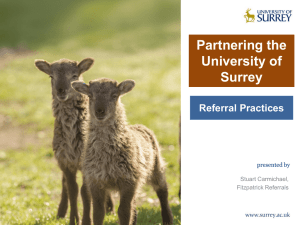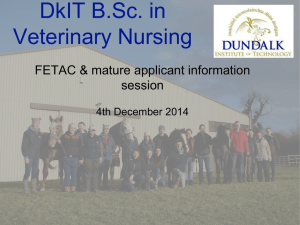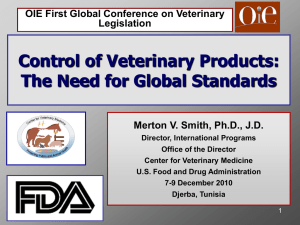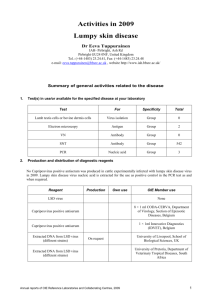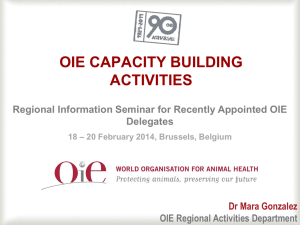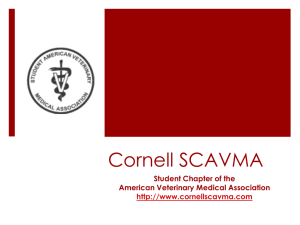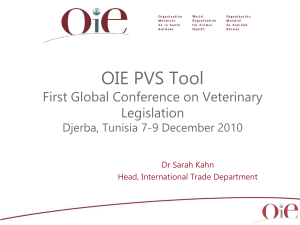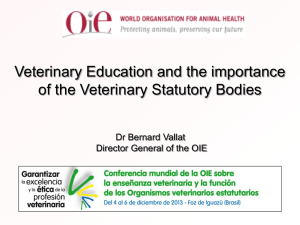veterinary para-professionals
advertisement
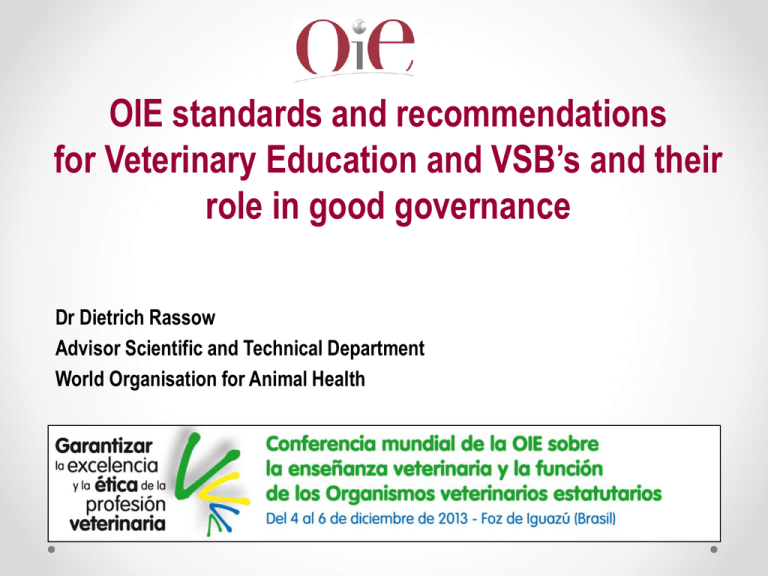
OIE standards and recommendations for Veterinary Education and VSB’s and their role in good governance Dr Dietrich Rassow Advisor Scientific and Technical Department World Organisation for Animal Health Agenda I. Introduction II. OIE Standards on Veterinary Education III. OIE Recommendations on Veterinary Education IV. OIE Standards on Veterinary Statutory Bodies V. Summary I. Introduction Performance of Veterinary Services >>> ability, skill and qualification of human resources. Level of Veterinary Education >>> often not acceptable and no or little control of the quality of the profession. OIE has been mandated by Members >>> global leadership role in establishing the basic Veterinary Education requirements for effective National Veterinary Services. Mandate >>> for educational requirements, rules and obligations for the veterinary profession and their implementation 3 II. OIE Standards on VE •Chapter 3.1. on Veterinary services General organisation - Article 3.1.2. (point 7) descriptions of each position within the Veterinary Services to include the requirements for education, training, technical knowledge and experience. •Chapter 3.4 on Veterinary Legislation - Article 3.4.6 (point 1.b) definition of the minimum initial and continuous educational requirements for veterinarians and veterinary para-professionals. 4 III. OIE Recommendations on VE (1) • Developed by an Ad Hoc Group of Deans, academicians and experts from all regions between 2009 and 2011 • Commented by OIE member countries and reviewed by OIE Terrestrial Code Commission • “Day 1 Competencies”= competencies that new veterinary graduates need to have to fulfil National Veterinary Services tasks as defined by the OIE • Comprises both public and private sectors III. OIE Recommendations on VE (2) • Developed by the Ad Hoc group between 2011 and 2012 • Available since Sep 2013 • Companion document to “Day 1 competencies” • A model serving as a tool for developing curricula • Allows every flexibility to accommodate vast differences IV. OIE Standards on VSB (1) Article 3.4.6: Veterinarians and veterinary paraprofessionals Veterinary legislation should provide a definition of veterinary medicine/science to address 1. 2. 3. 4. 5. Prerogatives of veterinarians and of the various categories of veterinary para-professionals Minimum initial and continuous educational requirements and competencies for veterinarians and veterinary para-professionals Conditions for recognition of the qualification for veterinarians and veterinary para-professionals Conditions to perform the activities of veterinary medicine/science Exceptional situations under which nonprofessionals may undertake professional activities. IV. OIE Standards on VSB (2) Article 3.4.6: Control of veterinarians and veterinary para-professionals Veterinary legislation should provide a regulatory basis and therefor should 1. 2. 3. 4. 5. describe the general system of control describe the various categories of veterinary paraprofessionals with their respective training, qualification, tasks and extent of supervision. prescribe the powers to deal with conduct and competence issues including licensing requirements Provide for the possibility of delegation of powers to the VSB Where powers have been so delegated, describe the prerogatives, the functioning and responsibilities of the mandated body. IV. OIE Standards on VSB (3) Article 3.2.12 deals with the Evaluation of a VSB and provides an overview of the different elements of a VSB. An evaluation would in particular consider the 1. 2. legislative basis, autonomy and functional capacity membership representation 3. accountability and transparency of decision-making 4. financial sources and financial management 5. programmes for training and for continuous professional development for veterinarians and veterinary para-professionals V. Summary (1) 10 OIE respects national and regional specifics in Veterinary Education. OIE provides recommendations to support improvement in the training of veterinary competency. OIE provides standards to ensure a regulatory basis for the control of veterinarians. V. Summary (2) Applying OIE Standards and Recommendations on Veterinary Education and VSB’s ensures quality in the delivery of professional services. increases credibility of the Veterinary Service. contributes to the development of good governance. 11/Item5 Thank you for your attention Organisation mondiale de la santé animale World Organisation for Animal Health Organización Mundial de Sanidad Animal 12 12 rue de Prony, 75017 Paris, France - www.oie.int – oie@oie.int 12

